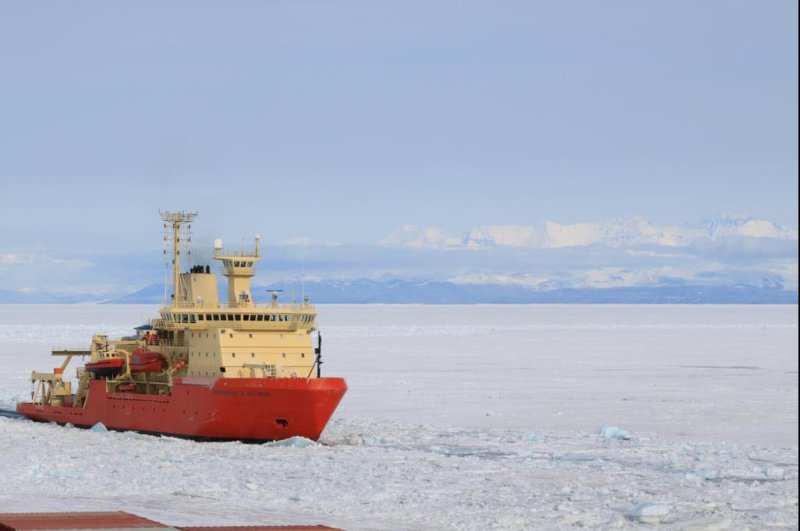The National Science Foundation research vessel Nathaniel B. Palmer helped scientists map the floor of the Ross Sea in 2015. Photo by L. Simkins/Rice University
HOUSTON, Feb. 18 (UPI) -- Within 1,500 years of the end of the last ice age, a 100,000 square-mile section of an Antarctic ice shelf collapsed.
The floor of western Antarctica's Ross Sea is composed mostly of a 1,000 mile-long continental shelf. As recently as 18,000 year ago, the entirety of the seabed supported a massive ice shelf.
Furrows on the seabed suggest the ice shelf collapsed in sudden and dramatic fashion during a warming period at the end of the last ice age. The damaged inflicted by the breaking ice was detailed by a seafloor mapping system aboard the U.S. research vessel Nathaniel B. Palmer.
"The evidence shows that an armada of icebergs -- each at least twice as tall as the Empire State Building -- was pushed out en masse," oceanographer John Anderson, an earth sciences professor at Rice University, said in a press release. "We know this because this part of the Ross Sea is about 550 meters [1,804 feet] deep, and the icebergs were so large and so tightly packed that they gouged huge furrows into the seafloor as they moved north."
The end of an ice sheet's contact with the seabed is known as the grounding line. Evidence on the seafloor suggests the ice shelf's grounding line quickly retreated in the wake of the 10,000-year-old collapse.
"Following ice-shelf breakup, the grounding line is left exposed to marine processes, such as ocean warming, which can erode the grounding line and cause it to move back toward the shore," Anderson explained.
After the initial breakup, the ice shelf's retreat was halted by a series of shallow ridges. The pause lasted 5,000 years, but was followed by another significant collapse and breakup of ice.
Geochemical analyses -- including radiocarbon dating -- of sediment samples puts the timing of the second collapse at about 3000 B.C.
In 2002, a smaller Antarctic ice shelf called the Larsen B collapsed. But the breakup lasted only a few weeks. The collapse of the Ross Sea ice shelf lasted several thousand years.
The ice shelf has since reformed. But scientists worry global warming could once again initiate a dramatic breakup. Today's Ross Sea ice shelf is smaller and thinner, but its presence blocks a number of other inland ice sheets that are slowly creeping toward the sea.
The current shelf extends some 621 miles beyond its grounding line.
"That's a condition that most glaciologists consider unstable, and it is not unlike the situation that existed prior to the big breakup that began 5,000 years ago," Anderson said.
The new research is detailed in the journal PNAS.















